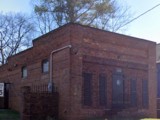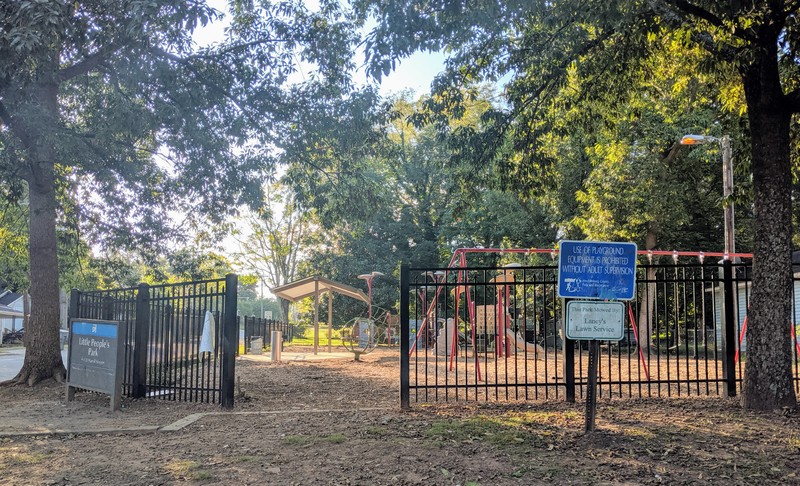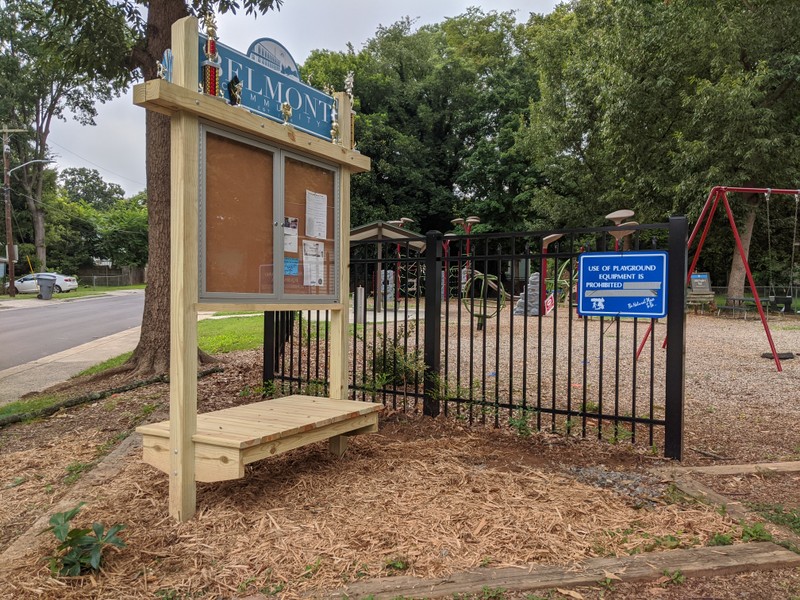Business Use to Single Family Home & Belmont Springs
Introduction
Author-Uploaded Audio
Listen to a narration of this entry's description by UNCC Urban Institute User.
Text-to-speech Audio
Images
Prior grocery store, now a home

Little Peoples Park

Little Peoples Park message board

Backstory and Context
Text-to-speech Audio
Begin walking south on Harrill Street for two blocks toward Belmont Avenue. You will pass Little Peoples Park on the left at East 15th Street and will then be in the former Belmont Springs neighborhood.
The parcels making up Little Peoples Park were conveyed to the City of Charlotte in September 1972. Mecklenburg County Parks and Recreation have a memo from February 1988 that mentioned houses and piles of brush being cleared to create the 1-acre park.
In 2019, the Belmont Community Association worked with Parks and Rec through a City of Charlotte Neighborhood Matching Grant to add a covered pavilion, picnic tables, grill, and message board.
Now, back to the start of Belmont Springs. By 1892, the Belmont Springs Company was making plans for developing a tract of land on a hilltop across Sugar Creek. In 1896, the company formally platted a nine-block area, with Belmont Avenue running through the subdivision's center. Low-lying land between Seigle Avenue and Sugar Creek at the western edge of the subdivision was shown on the plan as a tree-shaded park with a winding drive called McAden Avenue. In the park were the spring-fed branches that gave the development the name Belmont Springs.
Proceed to the corner of Harrill Street and Belmont Avenue. You will cross both Harrill and Belmont to find the medallion at 1035 Harrill Street.
